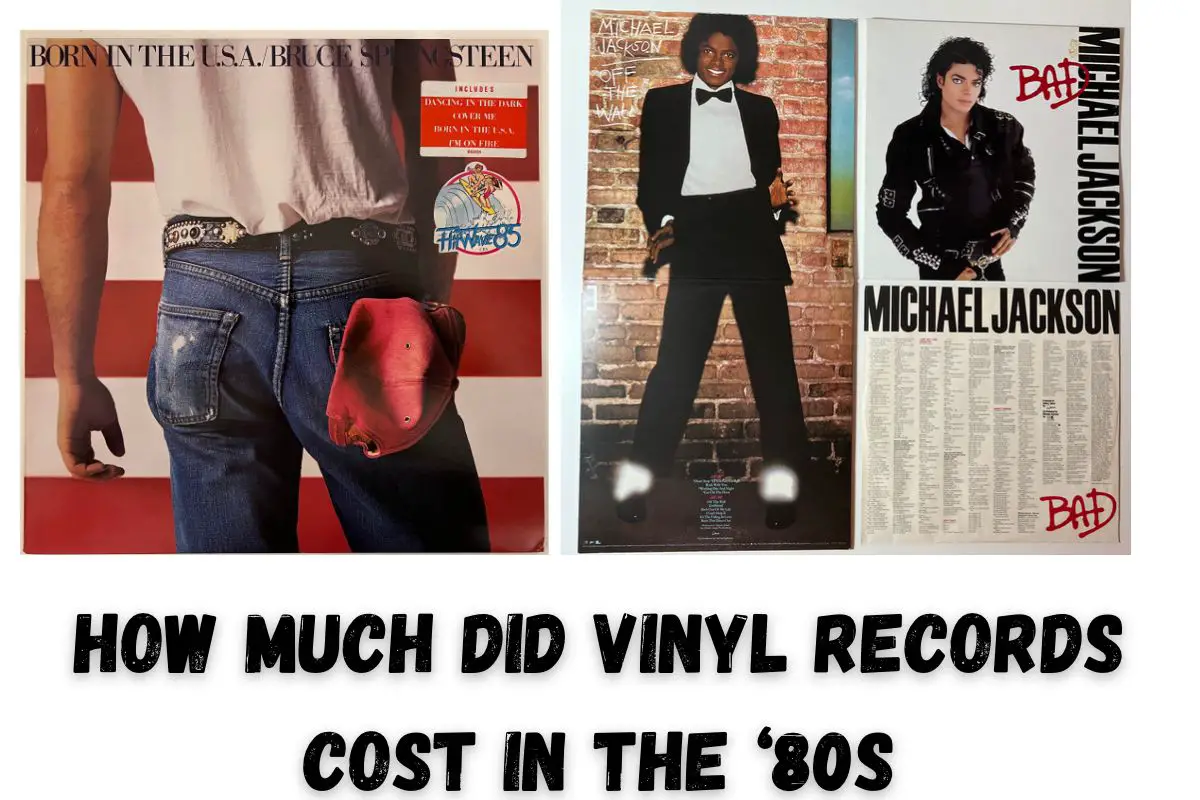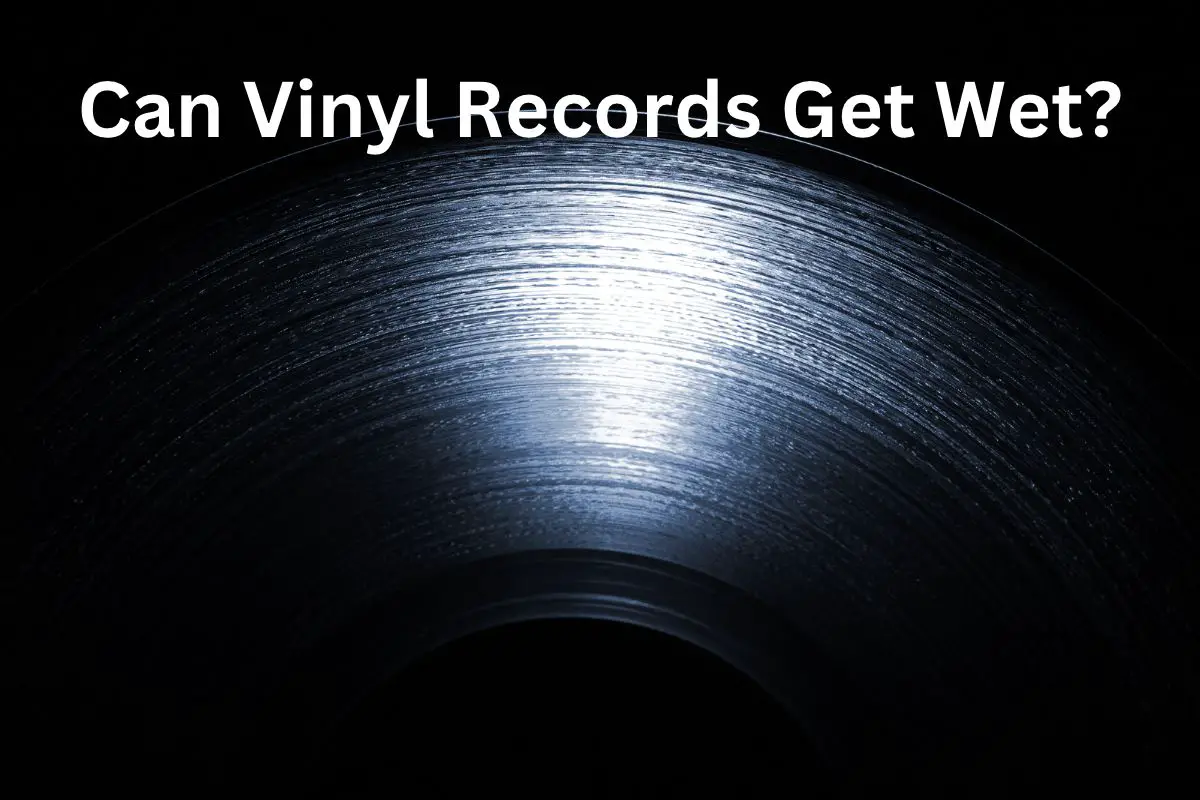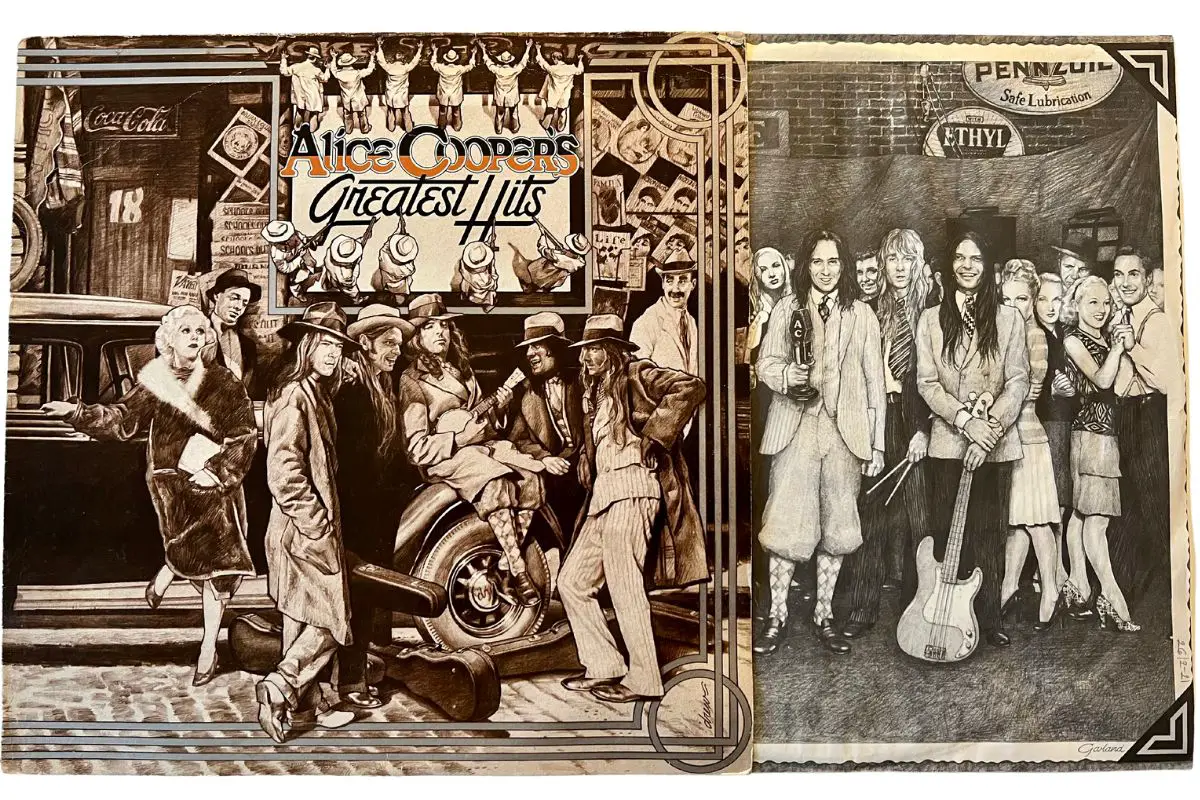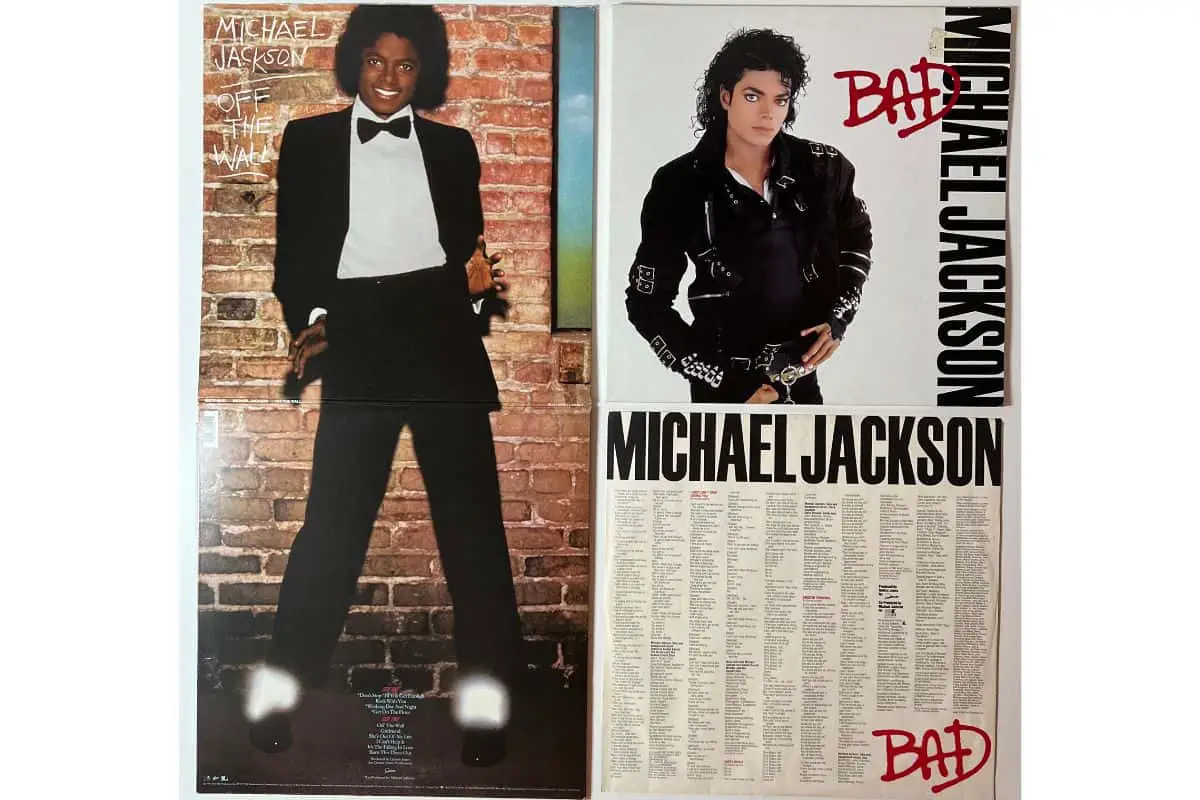This post contains affiliate links.
Music was an integral part of the 1980s — the era just wouldn’t have been the same without big hair bands, Madonna and Michael Jackson. Interestingly, it was also in the 80s when cassettes and CDs began outselling vinyl records despite costing roughly the same. So, how much did vinyl records cost in the 80s?
Vinyl records cost an average of $7 to $10 in the 1980s when purchased brand new. Used records were priced between $4 to $5, with indie bands or less popular albums dropping for less. Retailers set prices, so they varied, but average prices for vinyl records rarely exceeded $10 from 1980 to 1989.
This article discusses the price of vinyl records in the early, middle, and late 1980s. It also covers factors that influenced vinyl record prices and briefly touches on the newfound popularity of vinyl records and their prices based on inflation. Read on to learn more.
Table of Contents
The Price of Vinyl Records in the US From the Early to Late 80s
Although cassette tapes were eating up a large portion of the vinyl record’s market share from 1980 to 1989, LPs still enjoyed moderate success up until around 1987. This was the year when compact discs really began taking the market by storm as portable players became more affordable to the average consumer.
So, how much did vinyl records cost in the 80s? Let’s look at the prices of vinyl records during the early, mid, and late-1980s to see how and why they adjusted over time.
Vinyl Record Prices from 1980-1983
During the beginning of 1980, the average consumer still preferred vinyl records and 8-tracks over cassette tapes and compact discs. However, the market share for vinyl records had dropped to 66 percent.
The decrease in market shares wasn’t enough to stop producing vinyl records at this point. Bruce Springsteen released “The River” in 1980, retailing for an average of $8. That equates to $28.90 in 2023, accounting for a 261.3 percent rate of cumulative inflation.
Most record labels pushed a suggested retail price, but the ultimate price was set by retailers. Therefore, some stores in 1980 may have sold new releases for as low as $7, whereas others may have listed them for $10 or more.
By 1981, vinyl shares had dropped again, this time sitting at 63 percent. Despite this, record labels in the United States wanted to mark up the price of major new releases by a dollar. At the time, the average cost of new vinyl albums was $9, so companies wanted to push it to $10 per record.
Tom Petty was one musician who was up in arms about this proposed price increase. He considered it price gouging the fans and took to fighting his record label to prevent it. Petty went so far as to refuse to hand his album over to his label. Eventually, he won the argument, even choosing cover artwork for the album that hinted at his victory.
By the end of 1982, even consumers were becoming aware of the decrease in vinyl sales. Cassettes were becoming the norm as people flocked toward more portable music-listening devices. This is evidenced by the cassette’s 42 percent market share as 1982 came to a close. The suggested retail price of vinyl records around this time was approximately $8, with only major new releases or premium albums being listed at this rate.
In 1983, cassette sales surpassed LPs in the United States for the first time ever. Vinyl shares sat at a meager 44 percent, with cassettes taking a ten percent lead. The price of vinyl now dropped to approximately $6 to $7 per album. Cassettes were hands down the clear winner in 1983.
During this time, CDs were also around. However, they were still viewed as very costly and impractical items, and they still weren’t accessible to the average person, as CD players cost upwards of $800. Even if you had the money for a CD player, the average music store stocked very few CDs.
1984-1986
How much did vinyl records cost in the 80s? Well, vinyl continued its downward trend in the market in 1984, falling to a market share of 36 percent, with CDs rising 9 percent the same year. It was evident at this point that vinyl had reached the end of its lifespan; new technology was at the forefront of music, and it was taking over. Prices for vinyl albums averaged around $6 at the beginning of 1984, even for some new releases.
Interestingly, by the end of 1984, prices of vinyl records began to trend upward despite no increase in market trends. It’s speculated that prices rose to match competitor pricing of cassettes and CDs. Unfortunately, this only seemed to hasten the demise of vinyl. The price increase is also attributed to the release of major tracks from artists like Paul McCartney. That said, the average retail price at the end of 1984 was $9.
Cassettes remained the dominating force throughout 1985, but the price of CD players also began to drop, contributing to their boost in popularity. The average price of a vinyl record in 1985 was around $6 during the year, with vinyl market shares sitting at only 26 percent.
1987-1989
According to a Redditor who owned a record store in 1987, the average price for a new vinyl release was around $8. That said, several factors played a role in vinyl sales in the 80s, including location, artist, retailer, and more.
Around this time, cassettes and CDs truly began to showcase their popularity. In fact, CDs had proven so popular (or at least so promising) that a Toronto man opened a facility where people could hang out and listen to music on CD before committing to a purchase. It may have seemed silly at the time, but it was a sign of what was coming.
The market share and prices of vinyl began a rapid descent throughout the late 1980s. By 1989, Sony stopped pressing vinyls, and right before the 1990s, vinyl records sat at a bleak market share of one percent.
Factors That Influenced Vinyl Costs
Costs listed in the previous section are based on suggested retail prices and averages throughout the United States. Of course, consumers could find budget re-issues for less or limited edition albums for more. Sometimes, record stores had clearance sections with albums selling for pennies on the dollar.
That said, the average price throughout the country was based on how much it took to make the record — and making vinyl records wasn’t exactly a simple, inexpensive process. Let’s examine what goes into creating a vinyl record, as well as a brief workup of the costs involved.
Making Vinyl Records
Interestingly, the process of making vinyl records has stayed pretty much the same since the 1960s. They’re still constructed using plastics, including PVC (polyvinyl chloride) and PVA (polyvinyl acetate), and the process involves the mixing of materials, heating, and pressing. This lengthy process forms several chemical reactions which lead to the formation of vinyl resin.
From there, there is test pressing, and then the resin is cut, plated, and labeled. Some musicians wanted their vinyl colored, which also ups the cost factor. The design process includes choosing the artwork or photography for the inner sleeve and jacket. All of this doesn’t even factor in the equipment used.
The average cost of producing 100 vinyl records can be over $1,000. That means that each record would need to sell for at least $10 each just to break even on production costs. When you add in novelties, like additional colors or fancy artwork, that price increases. Of course, many record companies have more economical options available, as well as better equipment to handle mass-scale production of vinyl to reduce costs and maximize profits.
When pricing vinyl to sell, the popularity of the artist and the record play a role in the price, as well as when it’s being listed. For example, you’d likely pay more for vinyl on its release date than you would if you waited a year and purchased it later.
The Vinyl Comeback
Since 2014, vinyl records have been making a comeback. Today, you’ll see records that cost around $8 in the 1980s go for around $25 to $30 or more, depending on their features.
While this may seem like a lot, once you consider inflation, it appears that the cost of vinyl hasn’t actually increased much over the past several decades. Things have remained pretty steady, including production techniques. It seems that demand and technology haven’t significantly impacted price, which is interesting, considering that vinyl is now produced in lower numbers. However, that doesn’t mean that the value of vinyl won’t rise in the future.
For the most part, most vinyl collectors would love to see the price rise if it means earning money. However, some want to see the current fair pricing remain the same. They believe that when accounting for inflation, it should cost what it did way back when. Of course, there are exceptions for novelty albums, like autographed copies or limited editions.
To reiterate, when you ask, “How much did vinyl records cost in the 80s?” You can see that the value is roughly the same.
Top Albums of the 1980s
Imagine living in the 1980s. You want to buy the most popular albums of the era and bring them back to the current year. What albums would you buy? Here, we’ll look at some of the most coveted albums (and likely the most expensive) that you’d see in the 1980s.
1980 – Back in Black by AC/DC
You’re walking past your local record store in your acid-wash jeans and mesh top when something in the window catches your eye. It’s the glossy black cover of AC/DC’s new album, “Back in Black.” This album would define the decade, going on to sell over 50 million copies.
The fiery metal album features some of the band’s most popular tunes, including “You Shook Me All Night Long,” and was a must-have if you wanted to throw the gnarliest house party. You grab the album for $9 and look inside to see black-and-white photographs of the band live in concert.
1981 – Greatest Hits by Queen
After skateboarding to the arcade, you go inside to play Pacman when you hear Queen playing on the radio. The incredible vocals of Freddie Mercury just resonate in your soul, and the harmonies are instantly recognizable. Everyone in the place is vibing to the song, which reminds you that the Greatest Hits album just dropped, so you head to your local record store.
In 1981, you could pick up Queen’s Greatest Hits for around $9. It was the year’s best-selling album, with classics including “Another One Bites the Dust” and, a fan favorite, “Bohemian Rhapsody.”
1982 – Thriller by Michael Jackson
When Michael Jackson set out to create the greatest album of all time, he really outdid himself with the release of Thriller. This album features some of Michael’s most beloved songs and best work, including “Billie Jean,” “Beat It,” and the album’s namesake, “Thriller.” Only a year after its release, Thriller broke record after record.
Back in 1982, you could pick up the vinyl for around $9. Upon opening the vinyl sleeve, you’d be greeted with a foldout photograph of Michael Jackson lying on the ground with a feline cub, proving that he had a knack for out-of-this-world music and content that sold.
Conclusion
There’s no comparison between a cassette or CD to a vinyl record. There’s an authenticity and warmth that comes out as the needle scratches the surface of the vinyl and an emotion that you simply don’t hear in other formats. The nostalgia simply cannot be beaten, the reason we’re seeing such a resurgence in popularity among LPs.
It may seem silly to pay $25 or $30 for vinyl when they originally sold for $7 to $10, considering inflation, they’re around the same value. So, if you’re interested in joining the vinyl craze today, the time is now.
Sources
- Vinyl Club: How Much Did Vinyl Records Cost in the 80s
- LPM.org: Tom Petty Battles The Record Industry with Promises and Wins
- AARP: What 13 Things Cost in the 1980s vs. Today
- Reddit: I Owned a Record Store in 1987…
- CBC: When CDsMade Vinyl Obsolete and How it Came Back
- The Guardian: Sony To Start Making Records Again 30 Years After Abandoning Vinyl
- Sage Journals: Keeping What Real? Vinyl Records and the Future of Independent Culture
- Time: Vinyl Sales Up in 2014
- Country94: Vinyl Still Selling Says Backstreet Records Founder
VacationVinyl.com is a participant in the Amazon Services LLC Associates Program, an affiliate advertising program designed to provide a means for sites to earn advertising fees by advertising and linking to Amazon.com. We also participate in other affiliate programs which compensate us for referring traffic.


![Back in Black [Vinyl] Back in Black [Vinyl]](https://m.media-amazon.com/images/I/31N6fcQofoL._SL500_.jpg)
![Greatest Hits I [2 LP] Greatest Hits I [2 LP]](https://m.media-amazon.com/images/I/51VHYKUUUBL._SL500_.jpg)



